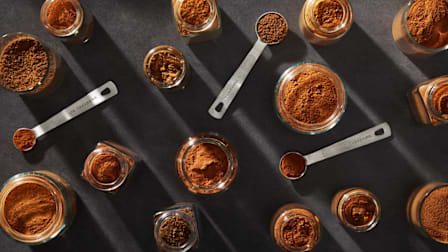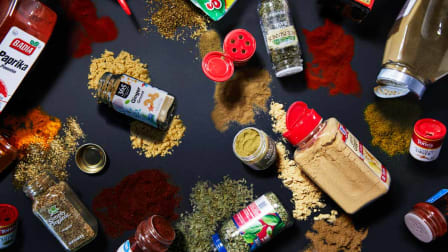Why You Should Test Your Vintage or Imported Dishes for Lead ASAP
15 New Yorkers have been poisoned by contaminated ceramics in recent months

If you eat from vintage, thrifted, or imported ceramic dishware, you may want to consider testing your ceramics for lead—or even getting a blood test.
The New York City Health Department recently issued a warning that traditional ceramic dishware has caused at least 15 cases of lead poisoning in adults and children in the city in recent months, most likely associated with ceramics from Ecuador, Mexico, Morocco, Uzbekistan, and Turkey, among other countries.
Other health departments, including those in Houston and the state of Arizona, have identified ceramics as a contributor to elevated blood lead levels among children, who are more likely than adults to have their blood levels checked.
The Food and Drug Administration has regulated lead levels in ceramic dishware since 1971, and has strengthened these regulations multiple times in the interim, most recently in 1992, an FDA spokesperson says. But some forms of ceramics, such as handmade, antique, and chipped or otherwise damaged ceramics, may be of concern, the spokesperson says.
What Types of Ceramics Are Affected?
Lead poisoning is most commonly associated with old paint and plumbing, but traditional, handmade, and antique ceramics can cause lead poisoning, as well.
“Lead is typically found in highly pigmented paints and lacquers or sealants used in ceramic dishware,” says Diane Calello, executive and medical director of the New Jersey Poison Control Center at Rutgers New Jersey Medical School. Pottery for food use made in the U.S. is supposed to be decorated with non-leaded paint, she says, but “a piece of dishware or pottery with lead paint can be impossible to distinguish from one with non-leaded paint.”
This is especially true with imported ceramics, Calello says, but consumers must also be mindful of the potential risk of lead exposure from any dishware purchased at a thrift store or from antique ceramics passed from generation to generation.
Why You Should Be Concerned About Lead Poisoning
Michael Kosnett, an associate clinical professor in the Division of Clinical Pharmacology and Toxicology at the University of Colorado School of Medicine, says he once treated a patient with lead poisoning caused by antique ceramicware that he’d inherited from his parents.
The parents had kept them in a display case and rarely, if ever, used them, but when they passed away, the patient began drinking juice and coffee regularly from the mugs.
“Over the course of months to a year or more, he became progressively ill. He lost weight. He developed abdominal pain, he became anemic, he had cognitive problems,” says Kosnett. His doctors were initially unsure of the cause, but eventually landed on his parents’ mugs, which they had received as a wedding gift decades before.
Symptoms of lead poisoning include high blood pressure, headaches, and muscle weakness and joint pain, but Kosnett cautions consumers not to depend on the presence of symptoms to determine whether or not they have lead poisoning.
“You can be suffering adverse effects of lead exposure on your health and have no clue,” he says. “At low doses that don’t cause symptoms, lead can have adverse effects in both adults and children.”
A 2018 study published in The Lancet found that nearly 30 percent of premature cardiovascular disease deaths in the United States may be due to lead exposure. The study followed 14,300 people for nearly 20 years. People with high levels of lead in their blood had a 70 percent greater risk of death by cardiovascular disease, and a 37 percent greater risk of premature death for any cause.
“It should be noted that at those lead concentrations that increased the risk of cardiovascular disease, individuals didn’t exhibit any symptoms,” Kosnett says.
And it’s not just cardiovascular disease. Lead builds up in the body, which means that long-term exposure of even low levels of lead can have negative health effects such as depression, constipation, high blood pressure, reduced fertility, kidney disease, and a plethora of other issues in adults, according to the CDC. Fetuses and children exposed to lead can develop intellectual disabilities and neurological problems.
Consumer Reports experts have long been concerned about the long-term effects of lead and have historically found the heavy metal in a range of food and products. “There are no safe levels of lead,” says James Dickerson, CR’s chief scientific officer. “Consumers should be vigilant and not only consider checking their blood levels for lead, but their water, too, which can be a significant source of exposure.”
How You Can Avoid Lead Exposure From Ceramics
So what can you do? Most prudent, say Kosnett and others, is to stop eating and drinking off any ceramics you’re uncertain about.
This includes vintage and older ceramics made before 1992, when the FDA instituted its current lead guidelines for food-safe ceramics; imported ceramics or those you bought abroad (where safety standards may be more lax); or ceramics made by hobbyist ceramicists if you’re unsure they comply with safety standards by using lead-free materials, or whether they use quality kilns that run at the high temperatures necessary to properly fuse the materials.
Check the FDA’s Red List of ceramics it has found to have unsafe levels of lead. When shopping for ceramics, don’t buy any for food and drink that have labels that say “not for food use” or “for decorative use only.” Such products may contain materials that leach lead.
Additionally, many traditional ceramicists, particularly abroad, may be using old kilns that are contaminated with lead. In those situations, even if the artist is using lead-free materials, the products could end up contaminated anyway, according to the FDA.
Most likely, though, lead is not too much of a concern with products made in the U.S., even with ceramics made by smaller artisans. “If the pottery was made by a potter in the U.S., there is very little chance that the glaze has lead,” says Mie Kongo, an adjunct associate professor of ceramics at the School of the Art Institute of Chicago.
Calello agrees, noting that new, American-made ceramics are generally safer than imported products. “In the U.S. the use of lead paints for dishware and also in residential buildings is strictly prohibited,” she says. “In other areas of the world these restrictions are more relaxed and may not be enforced.”
For those who have old, questionable dishes, the FDA advises consumers to test them with a lead-testing kit purchased from a hardware store, though it’s worth noting that many of these tests aren’t sensitive enough to detect the low levels legislated by Prop 65, according to Contra Costa Health Services in California.
Ceramics that are sold in California—and that’s most items that are sold online and shipped to California shoppers—are subject to Prop 65, the most stringent consumer chemical safety standard in the United States. Prop 65 requires products that may expose consumers to a specified level of lead to come with a warning label.
Dishes that are chipped or scratched, especially if they’re old or imported, are of additional concern, according to Contra Costa. This is because lead can leach from damaged and worn ceramics more easily than from intact ceramics. The New York Health Department, as well as the FDA, also consider damaged and worn ceramics as having additional risk. Kosnett notes, however, that a dish doesn’t have to be damaged for it to present a potential problem. In the case of his patient who became ill, the contaminated dishes had barely been used.
You should also never eat, drink, cook with, or store food in ceramics that are not explicitly designed to be used for those functions.
“People do paint ceramics for decorative wall hangings and things like that,” says Neal Beardmore, the production director at Heath Ceramics. “And that kind of product wouldn’t be subject to testing around Prop 65.”
Beardmore says he wouldn’t purchase ceramics from any retailer or seller that can’t speak to the product’s materials and can’t direct you to the manufacturer for more information. “It doesn’t make sense to put yourself at risk if you don’t know the origin of the materials,” he says.




















